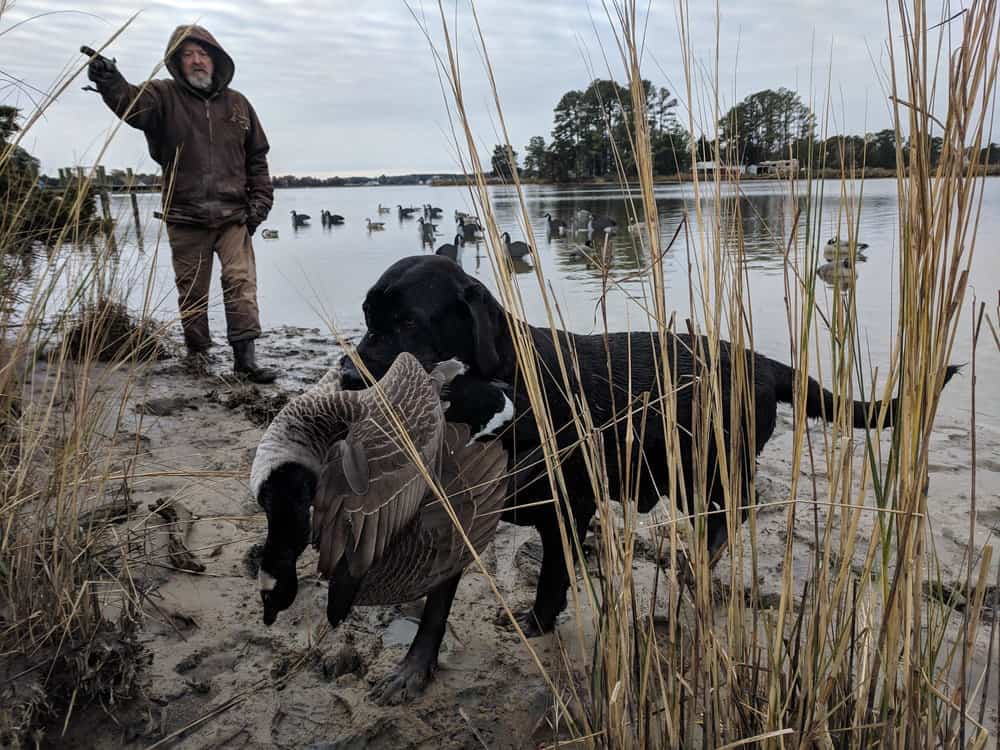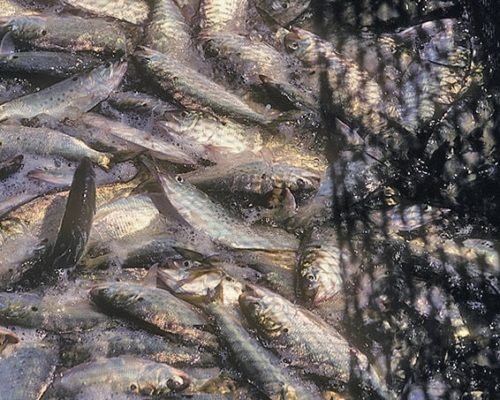Chesapeake outdoor guide Captain Chris Dollar brings up-to-date insight to the Bay Bulletin. Check in weekly to see what’s happening out there.
Hunter the black lab brings back a Canada goose to his hunting partner Rick Blackwell. (Photo courtesy Floyd Wooters)The Chesapeake waterfowl season is in full gear with lots of geese and ducks on the Susquehanna Flats, the farm impoundments, and the creeks from the upper Delmarva counties to the Choptank River. A big push of puddle ducks (mallards, widgeons, black ducks) into the marshes (Deal, Cedar, Fishing Bay) kept gunners entertained right around Christmas, and a good influx of divers (canvasbacks, scaup, and redheads) are flocking to the grass beds in the mid to lower part of Maryland on both sides of the Bay.
Meanwhile, over the past two weeks, the striper fishing in Virginia has been exceptional for many anglers with trophy-sized fish from 40 to 60 pounds being checked in. That season ended in Virginia’s portion of the Bay on December 31st, but remains open along the coast out to the three-mile line. Trolled and drifted eels have been popular techniques. Before the black sea bass season ended on New Year’s Eve, fishermen and head boats headed offshore for one last trip. Capt. Monty Hawkins, who operates the Morning Star out of Ocean City took advantage of calm seas the other day looking for a last shot of sea bass, and he found them. About a third of his fishing clients aboard limited out, including Gerald Meadows of Salisbury, Maryland who was the first to seal the deal. Brian Keehn of Huntingtown, Maryland took the largest sea bass pool with a 20- incher. Dan ‘The Monk’ Iacangelo of South Bethany landed a 36-inch monkfish.
Also on the sea bass hunt was Associate Virginia Marine Resources Commissioner Dr. Ken Neill, III and his crew. On the way to the sea bass grounds they came across birds working over feeding porpoises and bluefin tuna. The bluefins appeared to be in the 100-pound class.
“We had nothing onboard to catch them with,” he said, adding that they were about half way between the SE Lumps and the Cigar. They also got a report of bluefin tuna near the Chesapeake Light Tower from a commercial fishing boat. So the next day, he and his mates started at the SE Lumps trolling down to the Cigar for bluefins. Despite seeing “lots of birds, bait and some porpoise we did not get a [tuna] bite all day.” They brought sea bass tackle and stopped on a wreck and came back in with “another box of sea bass” before the season closed.
And now, here’s new twist on waterfowl conservation: The Maryland Department of Natural Resources is promoting a “One and Done Pledge” asking Canada goose hunters to consider voluntarily taking just one honker instead of the allowed two birds a day during this winter’s hunting season, which runs through February 2. The spring hatch on the Arctic breeding grounds was almost a complete failure by some biologists’ estimates. This unusual ask is appropriate and forward-thinking, and seems worth a try. It’s almost certain that the 2019-2020 goose limit will drop to one bird per hunter per day.




